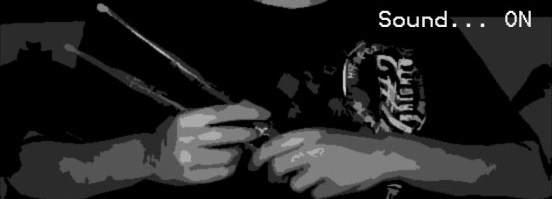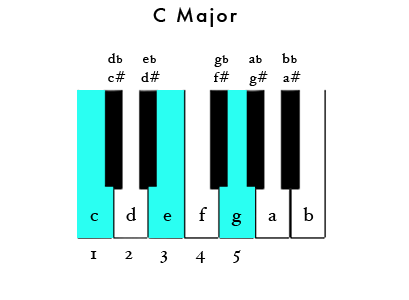I'm not a major salsa/latin music fan, but from what I've heard there are a lot of # and #m chords in it. Like C#m, G#m, F#m, C#7 |
|
Results 1 to 25 of 25
Thread: Samba/Latin chord progression
-
06-30-2009 12:13 AM #1Fnarclop!


- Join Date
- Apr 2008
- Gender

- Location
- Norway
- Posts
- 162
- Likes
- 8
Samba/Latin chord progression
I am working on a piece of music for big band, and the 4th part is going to be a fast paced latin song. But i, being a drummer, are not very skilled in making chord progressions and that stuff. so, anyone know a somewhat standard latin chord progression?
And just for giggles, I'll post the concept for the piece. Its called "Heiseter Suite" and it is dedicated to a party i was at some some weeks ago. It has 5 parts:
1: Very quiet blues. It is titled "The Morning Before" and has a sort of morning mood.
2: Light jazz, with a happy mood. Its titled "The Day" or something more fitting.
3: "The Evening" is finished, and has a reggae swing feeling. It has the mood of the slow paced start of the party, where everybody sat around talking and generally having a great time.
4: "The Night" is the 4th movement, and it is a latin/samba song. this is fast paced and happy, to reflect the quite wild behaviour and high spirits.
5: "The Morning After"... Guess what... Waltz. In minor. yay :p
Out of these 5 parts, the 3rd and 5th are finished.
-
06-30-2009 04:56 AM #2
-
06-30-2009 05:26 PM #3Call me "Lord" again...


- Join Date
- Aug 2007
- Gender

- Location
- New Joisey
- Posts
- 259
- Likes
- 0
Kinda depends on your instruments. If you've got a lot of brass, it'll tend to be in a sharp/flat key because of the way concert instruments are tuned.
A snappy I-ii-V progression should do, no? It's not really about the progression so much as the chords.
Jazz up the chords, 9, 11 chords, perhaps. I don't know about latin chord forms, but do a bit of research and you should be able to find the common chord types.-Ben
"In watermelon sugar the deeds were done and done again as my life is done in watermelon sugar. I'll tell you about it because I am here and you are distant."
R.I.P. Harry Kalas
-
07-02-2009 04:29 PM #4CACHERO>CHORO<CACHERO>CHO Achievements:








- Join Date
- Oct 2006
- LD Count
- 23
- Gender

- Posts
- 182
- Likes
- 3
- DJ Entries
- 4
on #2, you could do a light bossa nova rythym depending on what key you are in, lets say C major. With guitar, you could do a vamp over C69 and G13. I sounds really cool. Use one bar of each and repeat until your reading to move on. You could have the big band soloing in C and it will sound good.
-
07-02-2009 11:46 PM #5Fnarclop!


- Join Date
- Apr 2008
- Gender

- Location
- Norway
- Posts
- 162
- Likes
- 8
thanks for the suggestions


-
07-12-2009 11:36 PM #6Banned


- Join Date
- Aug 2005
- Posts
- 9,984
- Likes
- 3084
There's no difference between 'sharp chords' and chords without a sharp.I'm not a major salsa/latin music fan, but from what I've heard there are a lot of # and #m chords in it. Like C#m, G#m, F#m, C#7
Obviously not all of the chords are, but it seems fairly common.
-
07-13-2009 03:48 AM #7
-
07-13-2009 04:45 PM #8Banned


- Join Date
- Aug 2005
- Posts
- 9,984
- Likes
- 3084
'Musical references'... would they include playing any instruments? :l
Nope, if you use a different tuning a C# chord could well use the exactly the same notes as, say, an A chord.
It is completely arbitrary, and so any musical genre may use 'sharp' chords or 'flat' chords or whatever (in fact I don't think those terms even exist); the only thing that gives the genre its feel is the type of chords that are used (minor, seventh, major, sus4...), and the intervals between the different chords within a piece.
-
07-13-2009 05:09 PM #9
I have to say, this is probably the dumbest argument I've ever seen. Changing the tuning is irrelevant.
C# chords are not the same as any other chord. As you can see from the diagrams I posted above you can see the difference. In case you somehow don't see it, I'll list the notes in each chord, starting from the lower ones.
C: C, E, G, C, E
C#: C#, F, G#, C#, F
Oh my god! It's almost like... all the notes are sharp from the major chord! Wow, that's amazing! It's almost like it's a sharp chord!
It doesn't matter what tuning you're using, if those notes are played together, it's that chord. There isn't another chord that uses those notes, that's why chords have names.
I can only assume that by chord, you're actually referring to the shape you hold your hand, but that's totally different from the name of the chord.
I'm honestly godsmacked about how you can argue something so ridiculous. Have you taken any music lessons or classes? Cuz wherever you're getting this logic from is wrong. No two ways about it; it's wrong.
-
07-13-2009 05:51 PM #10Banned


- Join Date
- Aug 2005
- Posts
- 9,984
- Likes
- 3084
I've played piano for ten years. I also play flute and guitar and have a distinction in Grade 5 ABRSM music theory.
And how, sir, are you qualified to sound like an arrogant goon?
You have no idea what you are talking about and you are making yourself sound like an idiot.
Notes themselves are completely arbitrary: indeed for different instruments, the same written note will actually play different notes (for example a C# on one instrument would be a B on another). The only meaning that notes have is relative to each other.
Those chords you just posted sound exactly the same as each other. The only difference is that the second sounds a bit higher, and that means nothing because the pitch of the first chord is completely arbitrary in the first place.
-
07-13-2009 06:15 PM #11
I find it hard to believe those kind of qualifcations if you seem to not understand the concept of chords.
Notes are what chords are made of. The whole idea of a chord is to play certain notes together to create a particular sound. Changing the pitch isn't arbitrary, otherwise there'd be no distinction between major, minor, 7th, etc chords.
If I tell you to play a C chord, then you'll play C, E, and G. If I tell you to play a C# chord you'd play C#, F, and G#. Anything else (besides extensions of those) would be wrong.
If notes were arbitrary, then there'd be no difference between C, Dm, F, G, or Am chords. How can you distinguish chords by anything other than their notes? It doesn't even matter what order you play them on a piano. Any combination of the notes in a chord, played together, is that chord.
I know I'm sounding arrogant, but it's because what you're claiming is so ridiculous. And my qualifications are irrelevant, because I can guarantee you that I could go talk with a university professor of music here and they would acknowledge the difference between a C and C# chord. On guitar or piano.
So ultimately, how do you distinguish what chord you're playing if it's not according to the notes?
-
07-13-2009 06:25 PM #12Banned


- Join Date
- Aug 2005
- Posts
- 9,984
- Likes
- 3084
Look, just reexamine your position for a moment and just consider for a moment that you're wrong.I find it hard to believe those kind of qualifcations if you seem to not understand the concept of chords.
I just thought of a good way to finally convince you:
You said a C# chord is an example of a 'sharp' chord and such chords are used in Samba due to some kind of aural quality.
However, a C# chord is exactly the same thing as a D flat chord:
Db F Ab
So there's actually no distinction between a 'sharp' chord and a 'flat' chord. Surely this is ringing some kind of bell in the distance considering that sharp and flat are polar opposites of each other.
The same applies to a C chord; you could just as well say that it is a B sharp chord.
-
07-13-2009 07:15 PM #13
Looks like you've been misleading.
You said specifically that "there's no difference between 'sharp chords' and chords without a sharp." This statement implies that you think there's no difference between any chord and it's # variation, (IE C and C#) but there is a difference. That difference is the pitch, which is significant enough of a difference to grant the chord a seperate name.
You're right that there's no difference between a C# and a Db chord, but they both exist and are both referenced differently. However, that is not what you implied you were getting at in your other posts.
Even in that case, that doesn't matter. By me noticing the commonality of # chords is the same as saying there are a lot of b chords. Either way implies basically the same thing. I guess I could rephrase my post and say there are "a lot of #/b chords" or that they use "C#m/Dbm, G#m/Abm, F#m/Ebm, C#7/Db7" but that's unnecessary, because either way you know what it means.
All I was mentioning originally was my observation that it seemed common to see # and #m chords in tabs for latin/salsa music. I wasn't the one who labeled them that way, so it's not like I just made this up.
Again, if your point is based on the similarity between # and b chords, then you phrased it rather misleadingly. Somehow I don't think that was your point though, because you also said a "C# chord could well use the exactly the same notes as, say, an A chord" which isn't the same as comparing # to b. And with the musical background you claim to have, I would expect you to compare C# to Db before A. Where did A come from?
EDIT: Now that I look over these posts, perhaps you became focused on me saying "There isn't another chord that uses those notes, that's why chords have names." Which leaves out the fact that I would expect someone playing a Db chord to say they're playing Db rather than C#.Last edited by Vampyre; 07-13-2009 at 07:32 PM.
-
07-13-2009 10:44 PM #14Banned


- Join Date
- Aug 2005
- Posts
- 9,984
- Likes
- 3084
The post above is making a slightly different point, but the point is still that 'sharp' chords has no meaning.
And no, an equivalence to 'lots of flat chords' doesn't make sense, because as I pointed out, if you had a tab written without 'sharp chords' you could make some artificially by writing C as B# or G as F# etc. So it could mean 'lots of natural chords'. So you've covered all three bases; it doesn't mean anything.
I'll try a different method: there are different tunings used by orchestras. These tend to be set via choosing a frequency for A which is completely arbitrary; there's a nice list on Wikipedia:
If you had a piece of music with loads of 'sharp chords' for some reason, you could just choose a different tuning, change those sharp chords to natural chords, and the piece of music would be exactly the same - and this includes pitch.By an international treaty signed in 1939, modern pitch is standardized at A-440. However, tuning has varied over time, geographical region, or instrument maker. In seventeenth-century Europe, tunings ranged from about A-374 to A-403, approximately two to three semitones below A-440. Historical examples exist of instruments, tuning forks, or standards ranging from A-309 to A-455.3, a difference of almost six semitones. Although the official standard today is A-440, some orchestral groups and chamber groups prefer to tune a little higher, at A-442 or even A-444. Baroque pitch is usually cited as A-415, which is a semitone lower than modern pitch.
-
07-13-2009 11:55 PM #15
Ok, so in that case... using standard tuning (A-440; which should be assumed anyway) what chord is the same as C#, besides Db?
-
07-14-2009 12:07 AM #16Banned


- Join Date
- Aug 2005
- Posts
- 9,984
- Likes
- 3084
There aren't any.
-
07-14-2009 02:30 AM #17
So you were arguing completely based on the idea of changing tunings? How often do you change tunings like that anyway? Wouldn't it be easier to simply say a C# chord instead of chord X in tuning y?
-
07-14-2009 02:37 AM #18
I think the more important point here is that whether a chord is # or b doesn't inherently affect its sound. It's the relationships between the notes and chords that matter. A previous poster stated that playing a song in a key that happened to contain lots of sharp notes would sound more "latin" than playing the same song in a key that happened not to have as many sharp chords. This is false.
-
07-14-2009 02:46 AM #19
All I commented on at first was the simlpe observation of #, and #m chords in tabs. Granted, I haven't looked at many latin tabs, but the ones I have looked at had more chords like that in them, than any other tabs I've looked at. I hadn't even seen a #m chord used in any tab until I looked up a latin song.
If it's not a trend in latin music, then ... ok. All I was doing was observing and commenting.
-
06-25-2010 06:35 AM #20Lurker

- Join Date
- Jun 2010
- Posts
- 1
- Likes
- 0
Yes i am also facing the same problem as drummer i did not yet adjust chord progression.
-
06-25-2010 06:49 AM #21Member

- Join Date
- May 2007
- Gender

- Posts
- 635
- Likes
- 45
I didn't read all the replies... but regarding the whole Sharps issue... there is no difference between a sharp and 'non-sharp' chord. It's simply a half step higher.
The sound of a song depends on intervals, and minor, major, augmented etc.
Using lots of sharps isn't a style of music. You can transpose anysong... such as Let it be by the Beatles... into all sharps.
G D Em C is the original song
G# D# Fm C# is the exact same song, but transposed a half-step higher.
So the argument stands. Using 'lots of flats' is NOT a style of playing. It's the intervals between the Naturals and flats/sharps that matter.
-
09-25-2010 08:52 PM #22Lurker

- Join Date
- Sep 2010
- Posts
- 1
- Likes
- 0
I just made an account to say that Vampyre, you are probably the most arrogant noob i have ever seen. To go on an argument that just keeps implying that you have no idea what you are talking about, and not ever back up your thoughts or try to comprehend what the other person is saying and maybe think that you are wrong is so embarrasing to watch. Please go play an instrument.
-
09-19-2012 11:55 PM #23Lurker

- Join Date
- Sep 2012
- Posts
- 1
- Likes
- 0
Vampyre, I too have created an account to tell you that you have no knowledge of musical theory what so ever! Chords (unless altered) are made up of major and minor thirds this is what gives them their style of sound (major, minor, augnented, diminished ect) sound it is the amount of tones and semitones between the notes NOT if it has a sharp or flat sign. This is a ludicrous and childlike perspective on music
-
06-06-2013 08:05 AM #24Lurker


- Join Date
- Jun 2013
- Location
- Salisbury, Massachusetts, United States
- Posts
- 1
- Likes
- 0
"A Remark or Two"
1) ... idiomatic time signatures, key signatures, tempos/metronome markings, melodic content, harmonic content, bass content, technique markings, expression markings, and form exist in direct relationship to genres/styles.
2) ... depending on the temperament system being utilized, certain relationships do change.
3) ... depending on the theoretical system of analysis:
a) ... the relationship between two chords, in musical set theory, can be quantitatively exact but qualitatively opposite. [e.g. (037) is the pitch class set used for a major and minor triad]
b) ... the relationship between two chords, in the standard model, can be quantitatively relational and qualitatively opposite. [e.g. a major and minor triad]
4) ... the concept that one pitch doesn't equate to another is a truism: are the notes we select, no matter their horizontal or vertical consideration, arbitrary (based on random or personal choice, rather than logic, rational, reason as it pertains to a system)? The answer depends on the individual. There is a method to "my" madness applies to some: there isn't a method to "my" madness applies to others.
-
06-06-2013 08:42 PM #25Banned


- Join Date
- Feb 2012
- LD Count
- Counts fingers
- Gender

- Location
- Austin
- Posts
- 4,118
- Likes
- 4860
- DJ Entries
- 111
**Thread locked for necro-posting and a lack of activity from the OP**




 LinkBack URL
LinkBack URL About LinkBacks
About LinkBacks











Bookmarks